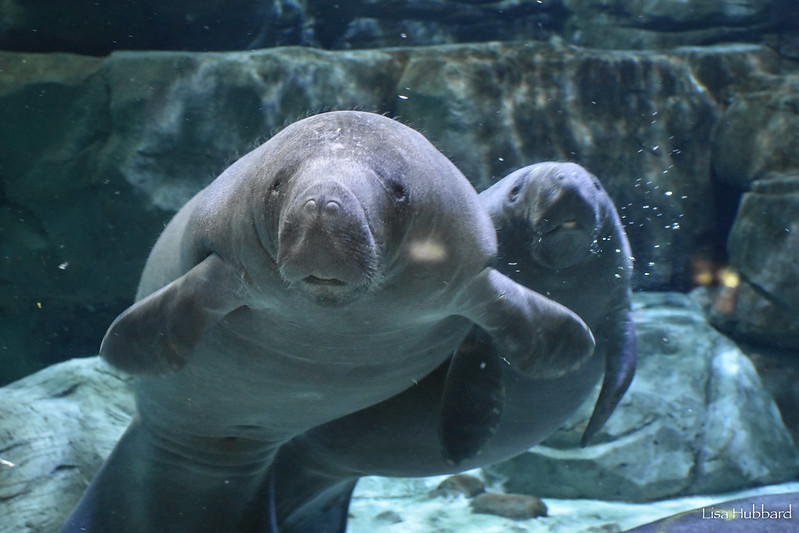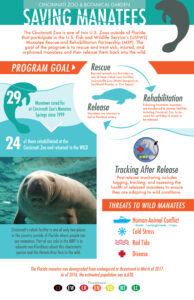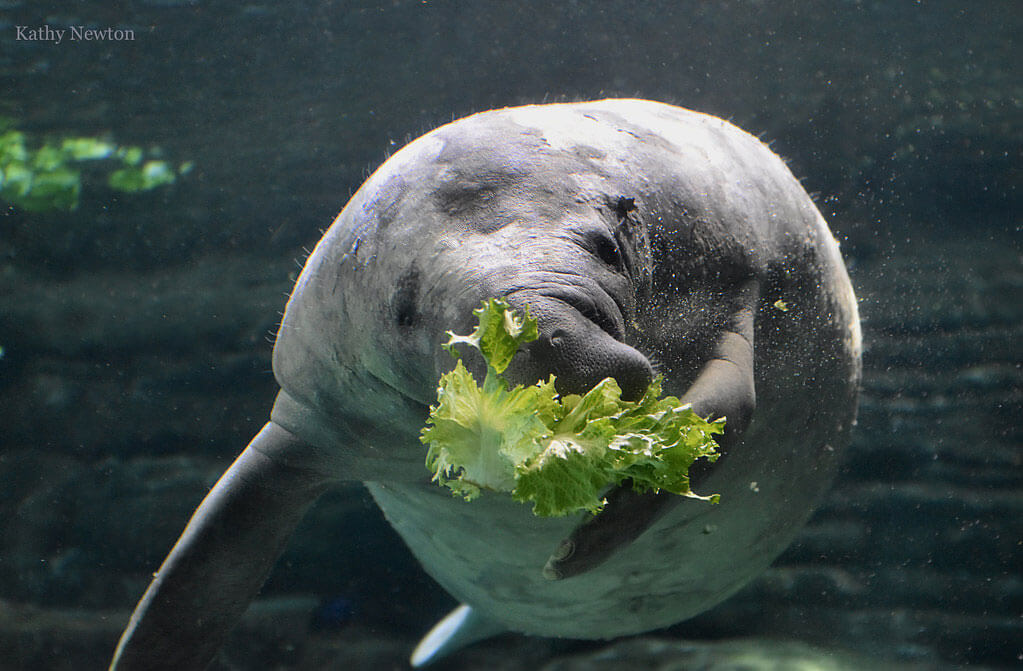Also called the sea cow, the manatee is the only herbivorous mammal specially designed to live its entire life in the water. The Florida manatee is at home in saltwater, as well as fresh water, but needs access to fresh water frequently. Its forelimbs are reduced to simple paddles for swimming yet are flexible enough to bring food to its mouth. The tail pumps up and down to propel the body. Though it is streamlined in shape to reduce water resistance, the manatee is a slow swimmer, averaging a speed of about three to five miles per hour. Fortunately, the manatee has no natural predators from which it must flee. Avoiding collisions with speed boats, however, is another story. Speed limits are posted in manatee zones to prevent boats from crashing into manatees.

Did You Know?
Holding its Breath: A manatee comes up for air as often as every 30 seconds, but can stay under water for up to 20 minutes when resting.
 The Cincinnati Zoo is one of two U.S. Zoos outside of Florida that participate in the U.S. Fish and Wildlife Service’s (USFWS) Manatee Rescue & Rehabilitation Partnership. Learn more.
The Cincinnati Zoo is one of two U.S. Zoos outside of Florida that participate in the U.S. Fish and Wildlife Service’s (USFWS) Manatee Rescue & Rehabilitation Partnership. Learn more.
- Manatees spend up to a third of their lives eating, and can eat up to 7.5% of their body weight everyday.
- A constant supply of molars erupts from the back of each jaw and pushes forward, forcing out the old teeth at the front as they wear out.
- Solid rib bones weigh the manatee down so it can feed on the river bottom without using a great deal of energy.


